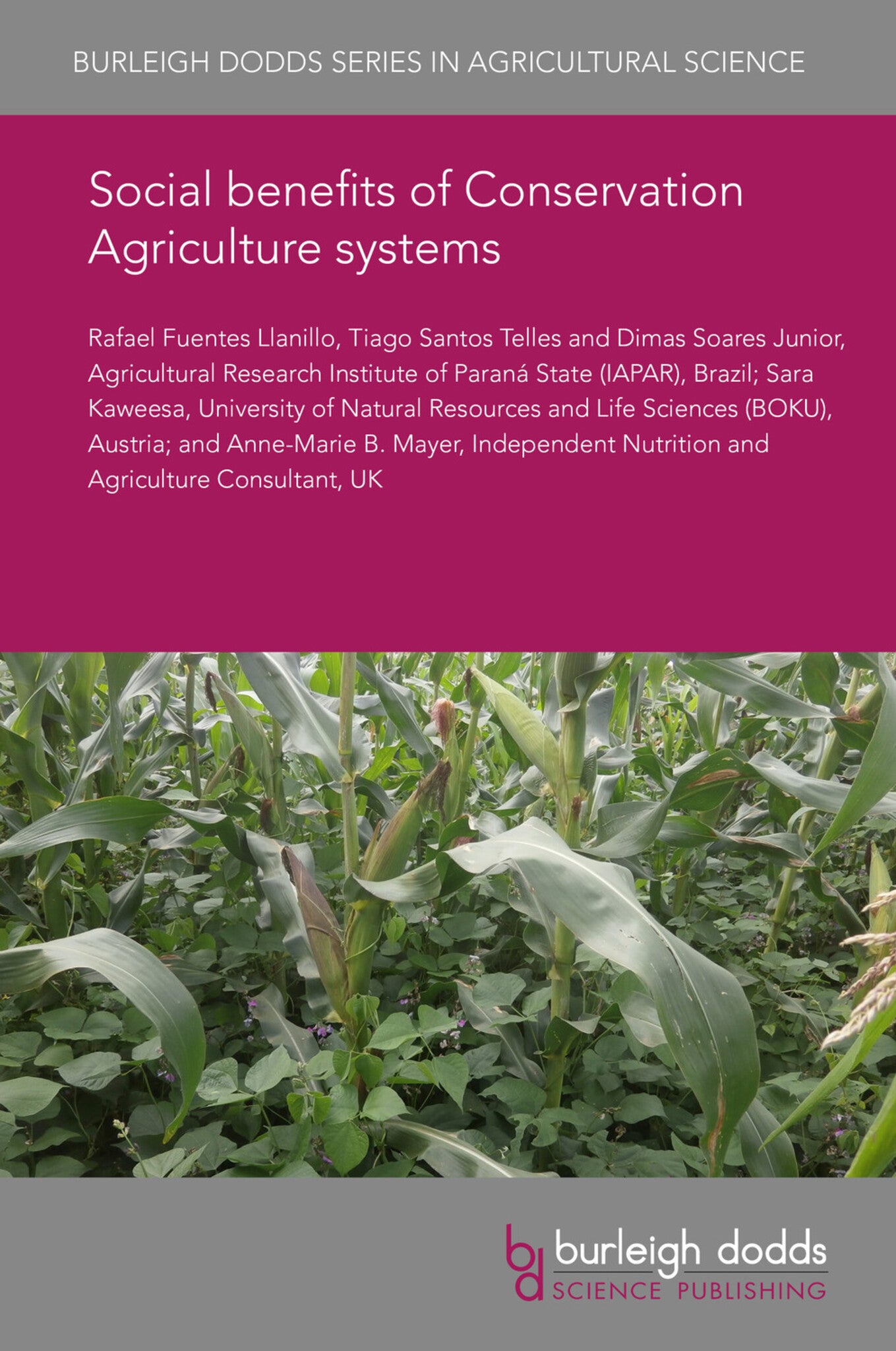We're sorry. An error has occurred
Please cancel or retry.
Social benefits of Conservation Agriculture systems
Prof rafael fuentes llanillo,
Dr tiago santos telles,
Dr dimas soares junior,
Dr sara kaweesa,
Dr anne-marie b. mayer
Regular price
£25.00
Sale price
£25.00
Regular price
£0.00
Unit price
/
per
Sale
Sold out
Re-stocking soon
Despite the small number of specific articles and reports on the subject, social benefits of CA cover several areas such as farmers’ organisation, soil governance and water conservation, social cap...
Read More

Some error occured while loading the Quick View. Please close the Quick View and try reloading the page.
Couldn't load pickup availability
- Format:
-
20 January 2020

Despite the small number of specific articles and reports on the subject, social benefits of CA cover several areas such as farmers’ organisation, soil governance and water conservation, social capital and community development, food security and nutritional aspects that are reviewed in this chapter. The successful adoption of CA in South America had a strong effect on farmers’ communication and organisation that can be considered the major social benefit of CA that was spread all over the world. In regions where adoption is massive CA is capable to create soil and water governance. Varied socioeconomic benefits are achievable by the use of CA and are described. Effects on social capital building, community development and improvement in nutritional aspects promoted by CA adoption mainly in Africa are also described.

Price: £25.00
Publisher: Burleigh Dodds Science Publishing
Imprint: Burleigh Dodds Science Publishing
Series: Burleigh Dodds Series in Agricultural Science
Publication Date:
20 January 2020
ISBN: 9781786765963
Format: eBook
BISACs:
TECHNOLOGY & ENGINEERING / Agriculture / Sustainable Agriculture, Agronomy and crop production, TECHNOLOGY & ENGINEERING / Agriculture / Agronomy / Crop Science, TECHNOLOGY & ENGINEERING / Agriculture / Organic, Sustainable agriculture, Organic farming

1 Introduction 2 Farmers’ organization 3 Social governance and water conservation 4 Varied socioeconomic benefits 5 Social capital and community development 6 Food security and nutritional aspects 7 Conclusion 8 Where to look for further information 9 References



